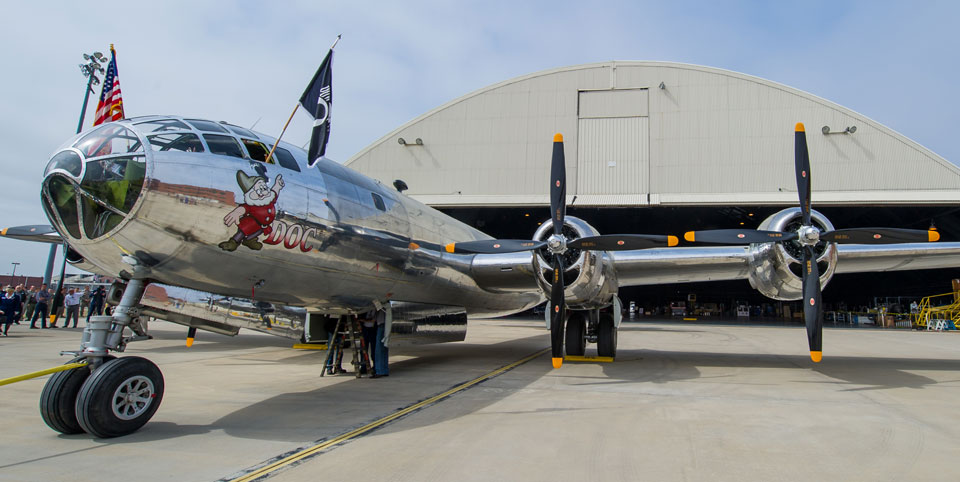Warbird News
New Fw-190 Project and Doc Progress
Fw-190 Project reported: Perhaps the biggest news is the stunning emergence of an Fw-190 project in Hungary revealed on March 16 by Warbirds News. Fw-190 use by the Hungarians began in November 1944 with the delivery of 16 aircraft that were used in air defense operations against American and Russian Air Force attacks in the region. The number of aircraft delivered grew to approximately 70, and there have been precious few details regarding their use and disposal postwar.
All we do know is that postwar, an initial Air Army was organized in 1947; however, details of equipment and operations are fragmentary. How the Russian occupying forces dealt with remaining German equipment during 1945-47 is unknown, but the photos in the story clearly show components of the Focke-Wulf fighter that are well preserved, as well as two BMW-801 engines.
Noteworthy in the interview is that no werk numbers are quoted, and no specific airframe seems to have survived Luftwaffe/Hungarian service in center section or identifiable form. The Fw-190 is a complex aircraft with 28 known survivors worldwide, and only the stellar example at Flying Heritage Collection is flying in its original restored state. Perhaps 20 more Flugwerk “continuation” projects are out there making their way toward flight that may “merge” with this parts trove to become more authentic. In any case, this is an amazing discovery. The spinner in the photograph is simply magical, until you see the engines!
Doc Progress: The restoration of the decade perhaps in the USA is the gradual return of B-29 Doc in Wichita, Kansas. Known as BN 44-69972 to the United States Army Air Forces, she was built at Boeing-Wichita in March 1945, delivered March 23 that year, and served as a bomber and training aircraft until 1956. Then she was one of 50 B-29s sent to NAS China Lake as “government issued property-aircraft” and became a “static ordnance testing device.”
Doc was flown to China Lake in March 1956 and transferred to the U.S. Navy on October 15, 1956. From that time she was a target for ordnance that thankfully always seemed to miss! Doc was one of about 30 airframes to survive intact and was the last B-29 to leave China Lake. Since 2007 she’s been back at her birthplace under restoration by Doc’s Friends.
What is most astonishing is that she is being restored by a team of ambitious volunteers with the goal of flying to EAA AirVenture Oshkosh 2015! Against all odds, this very complex and state-of-the-art pressurized bomber is considered very close to flight, and would be a stunning tribute to dreams and commitment.
The photos of the plane under restoration are simply amazing, and her polished finish reminds us how beautiful a weapon of war can appear, no matter for what purpose she was designed. The B-29 is rare, with only 29 above-ground complete airplanes remaining out of 3,970 examples built. She is also a very important aircraft historically with both the U.S. Air Force and the Soviet Air Force postwar building their initial atomic strike force around the airframe and its capabilities. The Soviets built close to 850 Tu-4 Bulls, and further development by the Tupolev design bureau created a dynasty that roughly paralleled Boeing’s B-52 with the Tu-16.
Doc is powered by four hybrid R-3350 Duplex Cyclone engines that combine the parts of Curtiss Wright R-3350-95W and R-3350-26WD engines that used to serve on AC-119K Gunships in Vietnam. The -95W does not fit into the B-29 cowling, so using the fittings and some external parts of the 26WD allows the more powerful core of the engine to fit. The greater power and durability (rated 3,500 hp!) of the -95W means that the engines have great durability and longevity as an alternative to the original R-3350 engine - now too rare and delicate to find in adequate numbers.
According to Doc’s Friends, the group is committed to returning this World War II warbird to the air to honor previous generations, educate current and future generations, and connect the world to the rich heritage of aviation. Thank you to all who work so hard to return our aviation history to the sky!
Note: Doc was rolled out on Monday, March 23, at Wichita’s McConnell Air Force Base, exactly 70 years to the day after its original delivery to the United States Army Air Forces during World War II.

